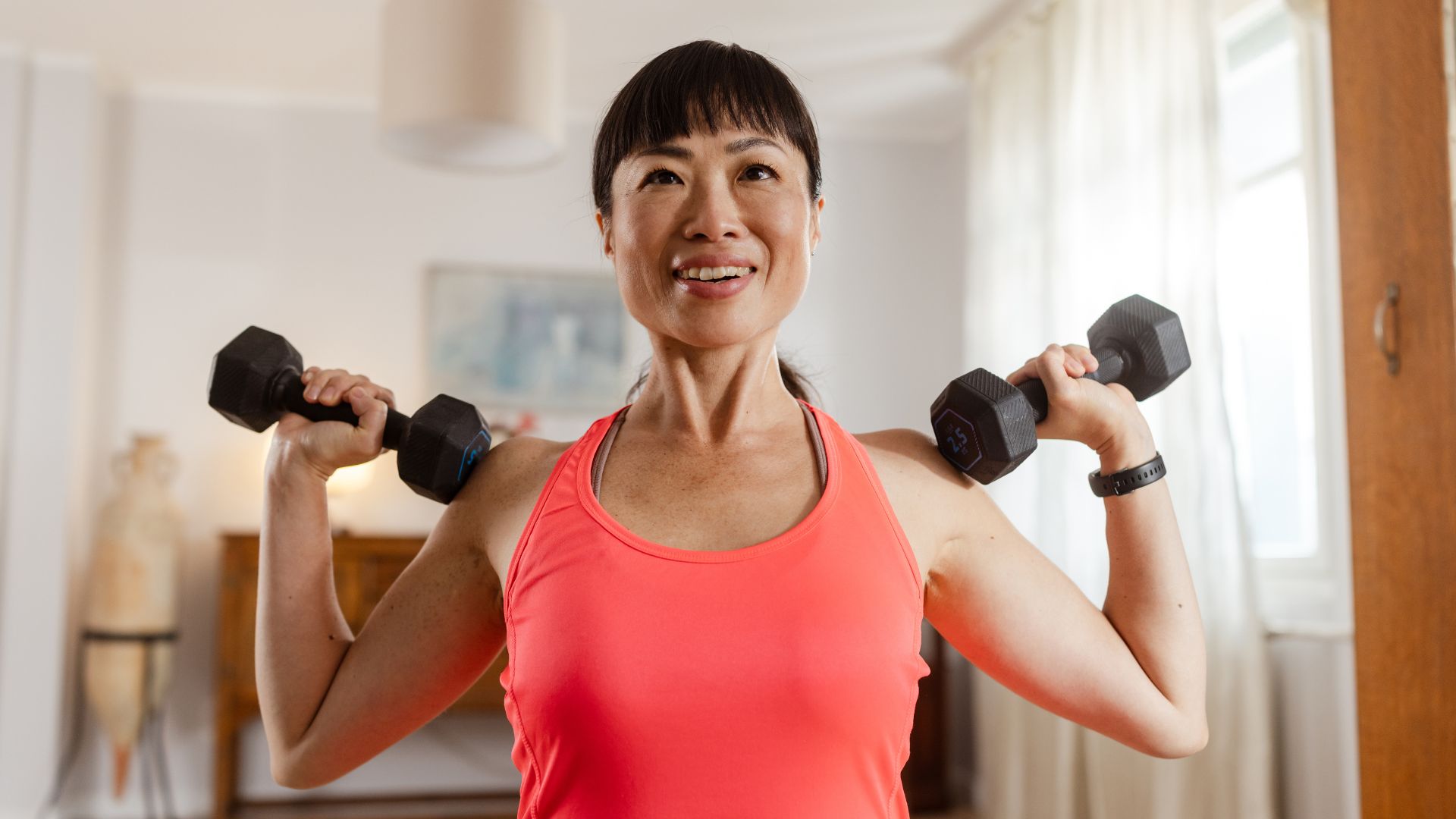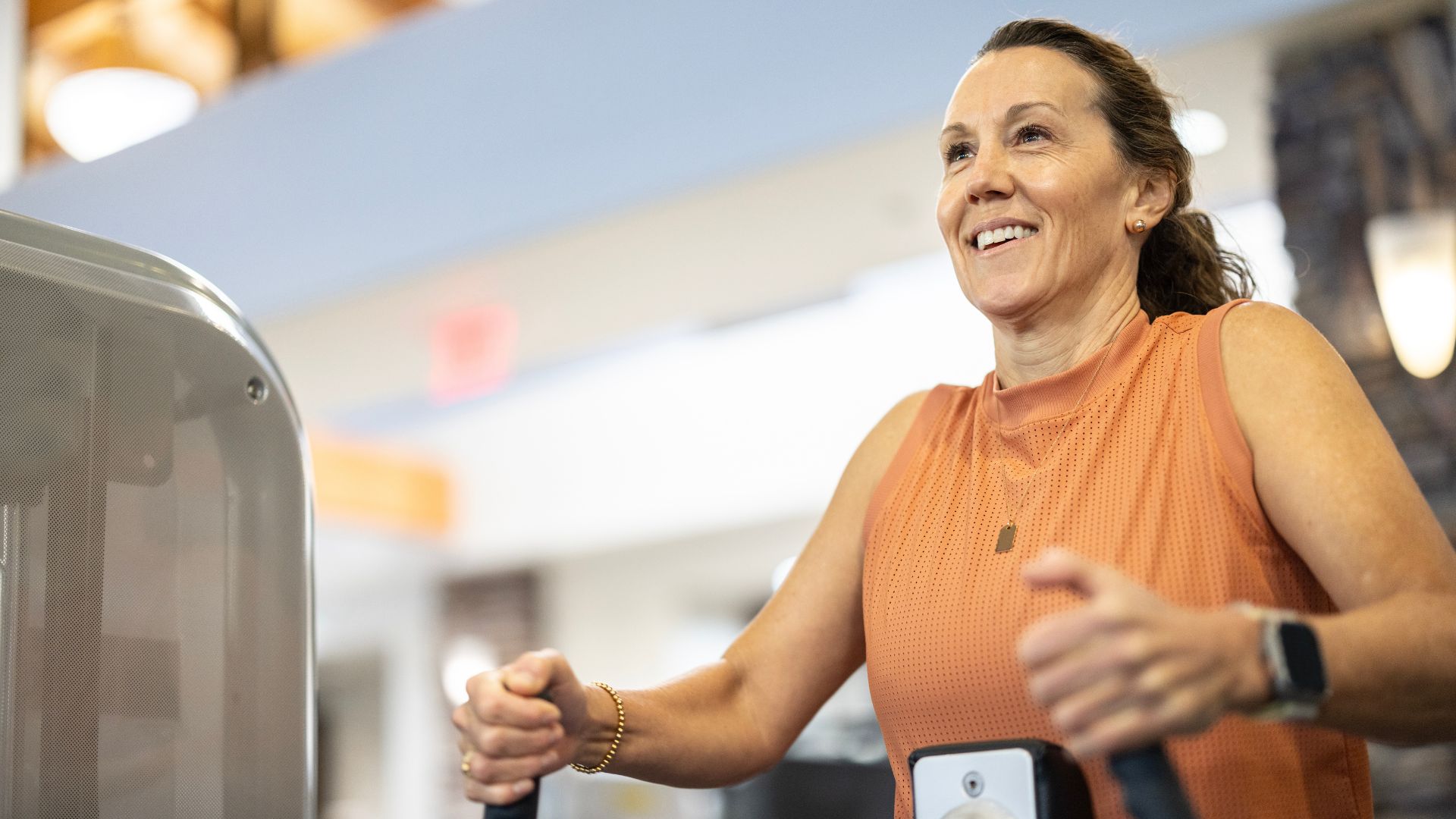Are free weights better than machines? I've finally found my answer with this study
Standing in the gym with limited time, I'm often left weighing up free weights vs machines for my workout


Grace Walsh
As an impatient, time-poor mum of three, choosing between free weights vs machines can make or break my workout. More often than not, I stick to free weights at home as I don't want to run the risk of hitting a busy period and having to wait around for a machine.
For me, exercise motivation comes from feeling confident in my workout as well. Being hypermobile, I've found that using free weights like dumbbells, barbells, and kettlebells helps me focus on my form and technique without needing a personal trainer nearby. I've also felt like I wasn’t always using the resistance machines as effectively as I could have been, and I’d often lose my momentum as I moved between each one.
I have my preference, but I'm looking to get better at strength training in 2025, so I'm happy to change things up as I need to. I know many people find training with machines means they can lift heavier weights. So, I asked the question - are free weights better than machines? - and found the research to help me decide.
Are free weights better than machines?
As it turns out, my preference is absolutely fine. There's little difference between using free weights vs machines in the gym or at home, whether you're looking to build muscle, get stronger, or improve exercise performance.
The review of studies was published in BMC Sports Science, Exercise, and Rehabilitation. It examined the effect of free weights and resistance machines on maximal strength, hypertrophy (muscle growth) and jump performance among adults up to 60 years old.
All studies directly compared free weights vs machines for at least six weeks, and researchers found that "no differences were detected in the direct comparison of strength, jump performance and muscle hypertrophy" between the two training types.
It's more about understanding how they can complement each other in a smart training program, agrees Emily Schofield, a certified personal trainer and strength specialist at Ultimate Performance.
Sign up to our free daily email for the latest royal and entertainment news, interesting opinion, expert advice on styling and beauty trends, and no-nonsense guides to the health and wellness questions you want answered.
However, some key benefits of free weights and machines may make one a better option than the other for you.
"Dumbbells, barbells and machines are all tools in a toolbox. Some are better suited for certain jobs, depending on your structure, training history, goals, and even how confident you feel in the gym," she explains. "And the best results often come from using both."
Benefits of free weights for strength training
- Improves balance: "Free weights require your body to control and support the weight through space. For example, if you're doing a dumbbell chest press as part of a dumbbell gym workout, you're not only pushing the weight upwards, you're also stopping it falling sideways," she says. This can help boost your balance and stability," says Emily Schofield.
- Translates to daily life: "These exercises require your whole body to work as a unit, which can be very empowering and functional," says Schofield.
- Easier to do at home: I often do a dumbbell workout at home with my yoga mat. Being able to swap the leg press for quadricep exercises in my back garden means I can still get my workout with limited time to be travelling to and from the gym.
- More versatile: "Most free weight exercises allow more variation in your training as you can change other factors, like the width of your grip, which can change your focus in an exercise," says Schofield. For example, a chest press with your hands closer together will work more of the triceps and help to 'tone' the muscle in your arms more than a wider grip.
Benefits of machines for strength training
- Better for beginners: "Machines are incredibly effective for isolating specific muscles and helping you train to a high level of intensity without the fear of dropping a weight or losing form," says Schofield. "This is especially helpful if you’re new to lifting, coming back from an injury, or just want to push your muscles to the limit safely."
- Ideal for targeting a specific area: If you want stronger arms, for example, a machine dumbbell curl can apply targeted resistance without you having to worry about your form. "This is a great way to really fatigue a muscle group," she says.
- Machines are typically safer: "They require less skill and motor control than free-weight exercises, they’re typically safer than free weights and cause fewer accidents and injuries," says Schofield, pointing to research by Monash University.

Can you build muscle on machines only?
Absolutely, says Schofield. So long as you're training to the same intensity, machines and free weights can help you build muscle and get stronger, as the research shows.
"The reason for this is simple," says the trainer. "When you're lifting weights, your body doesn't know whether you're using a machine or free weights. Your body only experiences the resistance they provide and the tension your muscles generate to move the load."
In most cases, machines and free weights can apply similar amounts of stress to your muscles, meaning their muscle-building potential is similar, she says.
Why you should use free weights and machines together as a beginner
For beginners, machines are the clear winner. However, in an ideal world, we'd use the two resistance types together.
"I often blend machines and free weights in a thoughtful progression," says Schofield. "Once you've developed some neuromuscular coordination - that's your body learning how to contract and control muscles effectively - we'll start introducing more free-weight movements."
It's like a staircase, notes the trainer. "Start with machines, then step into free weights when you're ready."

Kat Storr has been a digital journalist for over 15 years after starting her career at Sky News, where she covered everything from world events to royal babies and celebrity deaths. After going freelance eight years ago, she now focuses on women's health and fitness content, writing across a range of UK publications.
From perimenopause to the latest fitness trends, Kat loves researching and writing about it all. She's happy to give any fitness challenge a go and speaks to experts about wellbeing issues affecting people every day.
- Grace WalshHealth Channel Editor